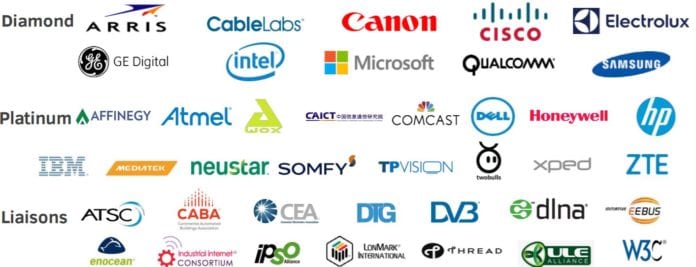The Allseen Alliance earlier this month merged with the Open Connectivity Foundation with plans to operate under the OCF name in working towards interoperability in the “internet of things” market through open source software frameworks and standards. IoT interoperability is a hot topic at conferences around the world, with the forecast billions of forthcoming IoT devices expected to be reliant on their ability to connect with each other in order to garner the most benefit, even in an industrial setting. Art Lancaster, CTO of Affinegy, told Industrial IoT 5G there has been progress in different verticals, but the growth opportunity of IoT needs to be sped up with a broad base of IoT interoperability using a consortium framework of many different companies.
Gartner predicts IoT reaching 25 billion devices and hitting $263 billion by 2020. Cisco sees it as a $19 trillion market by 2025, with an impact 10-times the internet itself. If these predictions are to come true, the current landscape must adapt to make connecting hardware, software and storage easier.
IoT ecosystems require interoperability to create seamless programmability of devices or sensors in enabling a world of connected devices. This means IoT will require standards to enable horizontal platforms that are communicable, operable and programmable across devices, regardless of make, model, manufacturer or industry. The hope is that connectivity between people, processes and things works no matter what screen type, browser or hardware is used. The reality, however, is that the IoT is fragmented and lacks interoperability.
According to a PTC blog post, this fragmentation can manifest as any of the following:
- Different OEMs: devices or equipment that are not made by the same manufacturer can cannot integrate.
- Different OSs: inability to run on the same operating systems.
- Different versions or times of purchase: devices that weren’t made or purchased at the same time.
- Different/incommunicable types of connectors or connectivity frameworks (e.g. devices).
- Different/inconsistent communication protocol standards (i.e. rules).
- Lack of programmability needed to connect in the first place.
Interoperability is a crucial missing piece to the progress of IoT, according to a report by McKinsey titled “Unlocked the potential of the internet of things.” The report notes:
- Interoperability between IoT systems is critical. Of the total potential economic value the IoT enables, interoperability is required for 40% on average and for nearly 60% in some settings.
- Currently, most IoT data are not used. For example, on an oil rig that has 30,000 sensors, only 1% of the data are examined. That’s because this information is used mostly to detect and control anomalies — not for optimization and prediction, which provide the greatest value.
In order for the “internet of things” to be successful, it should better promote IoT interoperability and open interfaces or APIs. Many devices focus on proprietary technology and interfaces because they view themselves as the only game in town, hurting the development and expansion of IoT.
According to Cloud Technology Partners, issues that arise around the lack of IoT interoperability with IoT-enabled devices include:
- The inability to test APIs using common approaches and mechanisms.
- The inability to push and pull information from devices using the same interfaces.
- The inability to secure devices using third-party security software.
- The inability to monitor and manage devices using a common management and monitoring layer.
To get around this, standards must be created. Interoperability between IoT is extremely complex, but the application layer is seen as the key place to get bridging technology to the layers below, according to Lancaster, who says IoT technology to write workflows still tends to be siloed, but the best place to transcend that challenge and gain broad interoperability is to work at the application layer. Wireless technologies like Z-Wave and ZigBee are at the physical networking layer, and early automation technologies put a simple interface schema for “is it on or off, what is the temperature, etc.” baked right into the radio modules. If you wanted to write ZigBee application you had to write APIs directly into ZigBee application. OCF is looking at creating standard specifications that allow for connectivity specs between each of the technologies.

